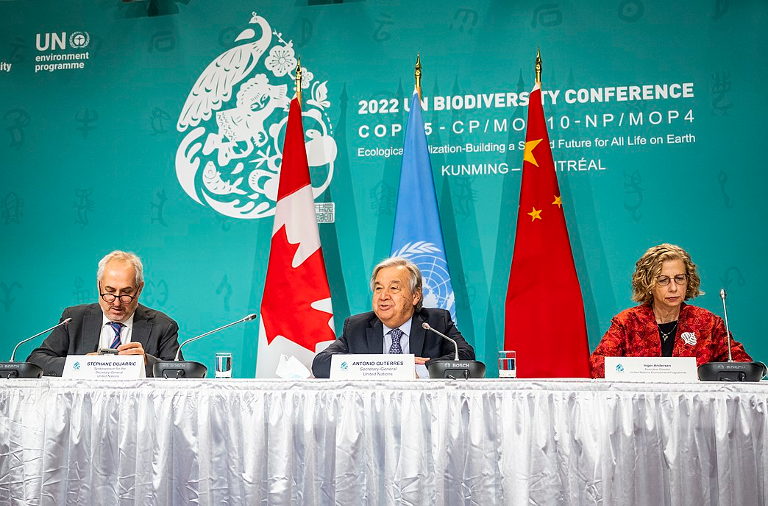Great rejoicing has followed the biodiversity agreement recently arrived at, just in time for Christmas. For example, ‘The Times’ editorial began: “The agreement in Montreal by 195 countries to protect wildlife and ecosystems, with 30 per cent of Earth’s lands and oceans protected by 2030, is a rare piece of good news in gloomy times.” The Environment section of the European Commission tweeted: “The new global #Biodiversity Agreement will ensure that nature keeps sustaining communities & economies for the next decades.”
The nub of our claim here today is: this “ensure” is a lie. Target-setting is very different from implementation and achievement. Voluntary agreements are very different from ones which are legally binding and enforced.
Don’t get us wrong. We are pleased that the Montreal talks didn’t irretrievably break down, and we are impressed by the surprising achievement of the diplomats who put together this agreement at the last minute. Moreover, we totally understand this widespread desire for good news. We two feel it so strongly ourselves! All of us desperately want to be able to believe that the future is looking less grim.
But fooling ourselves is not good for anyone. It’s certainly not good for nature; nor for our long-term mental health.
Bear in mind: We have been here before, and recently. The same process, a Conference of the Parties of the Convention on Biological Diversity, agreed an earlier set of targets in 2010, known as the Aichi Targets, supposed to be achieved by 2020. What happened? Summarising an official UN survey, The Guardian reported (15.9.20): “The world has failed to meet a single target to stem the destruction of wildlife and life-sustaining ecosystems in the last decade, according to a devastating new report from the UN on the state of nature.”
…click on the above link to read the rest…
